The most anticipated smartphones of 2021
These are the smartphones we can’t wait to get our hands on in 2021
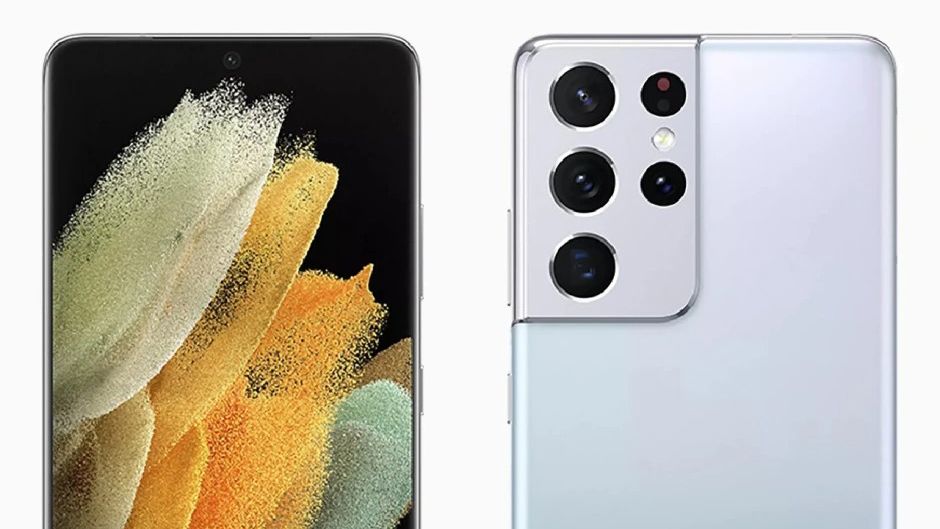
When it came to smartphones, 2020 finished strong with devices like the Galaxy Note 20 Ultra, the iPhone 12 and compelling affordable options like the Galaxy S20 FE all launching in the last quarter of the year. That’s just naming a few; there were a handful of other devices from Google, OnePlus and others that competed for our attention to close out the year.
But with 2021 nearly upon us, we find ourselves already looking forward to next year as these companies try to build upon their successes or correct some of their failures from 2020.
With that in mind, here’s a look at some of our most anticipated smartphones of 2021.
- Best smartphones in 2020
- iPhone 12 Pro Max vs. Galaxy Note 20 Ultra: Premium flagship fight!
- Galaxy S21: Price, release date, specs and more
Galaxy S21 Ultra
This will be the first major smartphone launch of 2021 with Samsung already confirming an event for January 14, and we know it will include the Galaxy S21 announcement. While the Galaxy S21 and the Galaxy S21 Plus are certainly interesting, it’s impossible not to be the most intrigued by the giant Galaxy S21 Ultra.
Some of the rumored specs are truly astounding, including the four-camera array on the back that will include a wide, ultrawide and then two distinct telephoto lenses at 3x and 10x optical zoom. With rumors indicating that Samsung has added the reliable laser focus system found on the Galaxy Note 20 Ultra, there is reason to hope that the Galaxy S21 Ultra will deliver on the promise that we saw in the Galaxy S20 Ultra. Paired with the powerful new Qualcomm Snapdragon 888, Samsung will look to make up ground against the iPhone 12.
We have little doubt that Samsung is up to the challenge from a hardware standpoint; the question remains whether the company can finally get its act together when it comes to camera software. Samsung has the top hardware on the U.S. smartphone market, but its inability to leverage computational photography has left it perennially behind Apple and Google when it comes to the best smartphone cameras on the market.
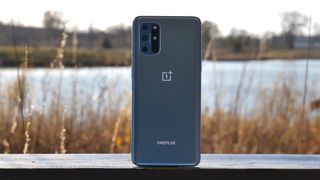
OnePlus 9 Pro
OnePlus isn’t the scrappy underdog it once was, but it still doesn’t command remotely the attention it deserves for the consistent quality hardware and stellar software support it offers. The OnePlus 8T that launched in the fall is an amazing smartphone that was held up by weak camera performance when compared to its peers. To be fair, I could have copied and pasted that from just about every OnePlus review over the last few years.
Stay in the know with Laptop Mag
Get our in-depth reviews, helpful tips, great deals, and the biggest news stories delivered to your inbox.
Hardware leaks are giving us some hope that the company may turn that around this year with schematics-based renders of the OnePlus 9 Pro showing two massive sensors and two smaller sensors. However, this wouldn’t be the first time OnePlus brought its A-game on camera hardware and still failed to deliver stellar real-world performance. So much like Samsung, we’ll need to see if it has managed to learn anything on the software front.
From a pure performance standpoint, this one should be an absolute beast with the Snapdragon 888 SoC, at least 12GB of RAM, UFS storage and perhaps a 144Hz 6.7-inch display. I’ve been burned before, but I’m really excited to see the OnePlus 9 Pro.
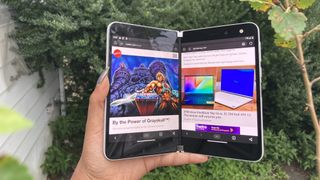
Microsoft Surface Duo 2
The Microsoft Surface Duo grabbed everyone’s attention when the company first announced it back in October of 2019, but by the time it made it to market in September, some of the shine had worn off. The specs were mediocre with a dated processor, the camera was an afterthought and the interface was a buggy mess even after the delayed launch. Some of this might have been forgivable were it not $1,399.
So why am I eagerly anticipating a follow-up to this underwhelming device? For all of its flaws, the Surface Duo did show promise and it is offering something truly unique in the market which is always an attention grabber for me. Our reviewer praised the Duo for its unsettled identity as a phone, tablet and kindle hybrid and, while I certainly agree with that sentiment, I still think Microsoft will benefit from having seen this device in users’ hands and honing how it fits all of these roles.
That is to say nothing of improvements to the hardware that should also give a serious boost to this device for the productivity-minded. A Snapdragon 888 processor and a little more RAM would do the Surface Duo a world of good. While the bezels aren’t going away completely, they certainly could be reined in from their current early-2000’s laptop thickness. This might be wishful thinking for Microsoft to pull off in a single year, but having watched what Samsung did from the Galaxy Fold to the Galaxy Z Fold 2 in a single year, it does feel possible.
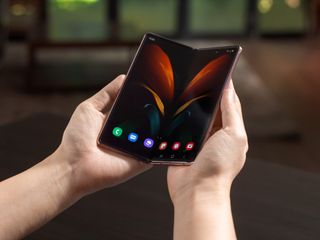
Galaxy Z Fold 3
Speaking of Samsung’s foldable lineup, the Galaxy Z Fold 3 is supposed to be one of possibly four foldables coming from Samsung in 2021 and it certainly is the one that I am most eager to see. Samsung somehow managed to take what seemed like a multigenerational leap going from the Galaxy Fold to the Galaxy Z Fold 2. While a similar technological advancement doesn’t seem possible this year, it will be interesting to see how Samsung refines the concept when it isn’t scrambling to rethink it.
From a purely aesthetic standpoint, Samsung only needs to do some slight bezel reductions; the two things I want to see are evidence of further improvements to durability and software. And while the utter lack of sales on the Galaxy Z Fold 2 isn’t instilling a tremendous amount of confidence in the possibility of a price drop, one would certainly be a welcome move.
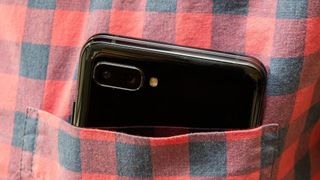
Galaxy Z Flip 2 FE
And on the subject of cheaper foldables, part of the aforementioned four Samsung foldable phones rumor for 2021 is that we will see a cheaper version of the Galaxy Z Fold and the Galaxy Z Flip. Presumably, they would follow the Galaxy S20 FE model and launch as “Fan Editions” of the standard Galaxy Z Fold 3 and Galaxy Z Flip 2. I’m interested in both, but I want to concentrate on the Galaxy Z Flip 2 FE.
The primary reason for this is simply the pricing. While the $1,449 starting price for the Galaxy Z Flip 5G might not lead you to believe that Samsung could get to $999 for this follow-up, the frequent sale price of $1,250 makes it a lot more believable. While I am not terribly drawn to this form factor, I can definitely see its appeal, and a foldable below the $1,000 mark would definitely help to cement the segment in the mainstream.
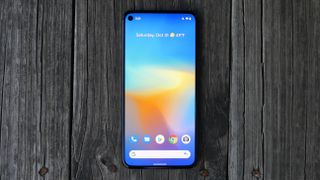
Pixel 6
I think the Pixel 5 is a better smartphone than it gets credit for, but it was hard not to be disappointed by Google’s decision to forgo the true flagship smartphone market in 2020. I even wrote at the time that seeing the Pixel 5 made me wish Google made a flagship smartphone.
Then, during Google’s Q3 2020 earnings call in November, we got a little more insight into what happened this year with Google and Alphabet CEO, Sundar Pichai, indicating that the company had made “some deeper investments in hardware, some of it takes 2-3 years to come together” and that in 2021, we would see some of those investments finally come into play. We assume this, at least in part, refers to work Google has done on its own 5nm chip in partnership with Samsung with an 8-core ARM processor and optimizations for machine learning.
While it would be overreaching to assume Google could match Apple’s A14 Bionic, a custom chip would certainly lay the groundwork for the company to be competitive with high-end flagships again in 2021. And with Google still arguably delivering the best smartphone camera on the market despite outdated hardware, it’s impossible to not be excited about the prospect of Google truly shooting for a flagship Pixel experience.
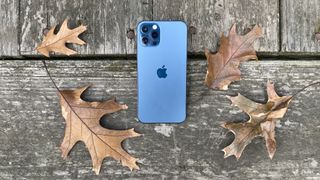
iPhone 13 Pro
On some level, it is difficult to get too excited about the next iPhone when the iPhone 12 just arrived and is so good that we’ve named it the best smartphone for most people. However, even with the fairly limited information we have today, there is enough to get me excited for what’s next for the iPhone.
You’ll notice I specifically point to the iPhone 13 Pro; that’s because most rumors say high refresh rate displays are only coming to the Pro models next year. Apple already delivers a smooth experience on the iPhone with its 60Hz panels, and we’ve seen how good its 120Hz can be on the iPad Pro for 3 years now. It’s going to be a complete game-changer for the iPhone 13 Pro models next year, and create a very clear break between the Pro and standard models again.
One of our only other complaints about the iPhone 12 was its battery life, and while it seems possible that Apple continues to address this with software updates, it will certainly make the necessary adjustments with the iPhone 13 to eliminate this complaint. There’s a lot more Apple could do. I fully expect the Apple A15 Bionic to blow its competition away and when it comes to camera hardware, Apple could do more to meet the telephoto capabilities of high-end Android smartphones.
The thing I am most anticipating with the iPhone 13 is discovering whether Apple continues to push the envelope while it is enjoying its current lead or if it makes the simple fixes and moves on. The latter would be understandable, but it would definitely be a lot less interesting.
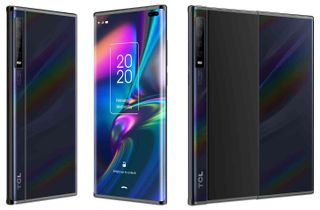
New form factors
This is a bit of a catch-all as I’m not entirely sure which company will bring new form factors to us next year. Samsung has been rumored to be working on some rollable smartphone concepts in recent years. TCL demoed a number of prototypes at CES last year that fall into this category with a smartphone that folded on itself twice and another that you essentially pulled apart to extend the display then pushed back together. Then you have devices like the LG Wing that caught us by surprise this year with an entirely different take on a dual-screen experience.
However you want to categorize them, I love to see companies pushing the boundaries of what a smartphone is. We seem to be returning to an era when this is possible again after almost a decade of smartphone design settling into a fairly predictable upgrade pattern. I couldn’t tell you at this moment which of these new ideas will take hold and spread to a wider audience, but it’s an exciting time to be in the smartphone, world and I can’t wait to see what’s next.
Sean Riley has been covering tech professionally for over a decade now. Most of that time was as a freelancer covering varied topics including phones, wearables, tablets, smart home devices, laptops, AR, VR, mobile payments, fintech, and more. Sean is the resident mobile expert at Laptop Mag, specializing in phones and wearables, you'll find plenty of news, reviews, how-to, and opinion pieces on these subjects from him here. But Laptop Mag has also proven a perfect fit for that broad range of interests with reviews and news on the latest laptops, VR games, and computer accessories along with coverage on everything from NFTs to cybersecurity and more.
